Szöveg tördelése
Barcelona Barcelona is a city on the coast of northeastern Spain. It is the capital and largest city of the autonomous community of Catalonia, as well as the second most populous municipality of Spain. With a population of 1.6 million within city limits, its urban area extends to numerous neighbouring municipalities within the Province of Barcelona and is home to around 4.8 million people, making it the fifth most populous urban area in the European Union after Paris, the Ruhr area, Madrid, and Milan. It is one of the largest metropolises on the Mediterranean Sea, located on the coast between the mouths of the rivers Llobregat and Besòs, and bounded to the west by the Serra de Collserola mountain range, the tallest peak of which is 512 metres (1,680 feet) high. Founded as a Roman city, in the Middle Ages Barcelona became the capital of the County of Barcelona. After joining with the Kingdom of Aragon to form the confederation of the Crown of Aragon, Barcelona, which continued to be the capital of the Principality of Catalonia, became the most important city in the Crown of Aragon and the main economic and administrative centre of the Crown, only to be overtaken by Valencia, wrested from Arab domination by the Catalans, shortly before the dynastic union between the Crown of Castile and the Crown of Aragon in 1492. Big Ben Big Ben is the nickname for the Great Bell of the striking clock at the north end of the Palace of Westminster, although the name is frequently extended to refer also to the clock and the clock tower. The official name of the tower in which Big Ben is located was originally the Clock Tower, but it was renamed Elizabeth Tower in 2012, to mark the Diamond Jubilee of Elizabeth II. The tower was designed by Augustus Pugin in a neo-Gothic style. When completed in 1859, its clock was the largest and most accurate four-faced striking and chiming clock in the world. The tower stands 316 feet (96 m) tall, and the climb from ground level to the belfry is 334 steps. Its base is square, measuring 40 feet (12 m) on each side. Dials of the clock are 22.5 feet (6.9 m) in diameter. All four nations of the UK are represented on the tower on shields featuring a rose for England, thistle for Scotland, shamrock for Northern Ireland, and leek for Wales. On 31 May 2009, celebrations were held to mark the tower's 150th anniversary. Brussels Brussels grew from a small rural settlement on the river Senne to become an important city-region in Europe. Since the end of the Second World War, it has been a major centre for international politics and home to numerous international organisations, politicians, diplomats and civil servants. Brussels is the de facto capital of the European Union, as it hosts a number of principal EU institutions, including its administrative-legislative, executive-political, and legislative branches (though the judicial branch is located in Luxembourg, and the European Parliament meets for a minority of the year in Strasbourg). Its name is sometimes used metonymically to describe the EU and its institutions. The secretariat of the Benelux and headquarters of NATO are also located in Brussels. As the economic capital of Belgium and one of the top financial centres of Western Europe with Euronext Brussels, it is classified as an Alpha global city. Brussels is a hub for rail, road and air traffic, sometimes earning the moniker "Crossroads of Europe". The Brussels metro is the only rapid transit system in Belgium. In addition, both its airport and railway stations are the largest and busiest in the country. Eiffel Tower Locally nicknamed "La dame de fer" (French for "Iron Lady"), it was constructed from 1887 to 1889 as the centerpiece of the 1889 World's Fair and was initially criticized by some of France's leading artists and intellectuals for its design, but it has become a global cultural icon of France and one of the most recognizable structures in the world. The Eiffel Tower is the most visited monument with an entrance fee in the world; 6.91 million people ascended it in 2015. The tower is 324 metres (1,063 ft) tall, about the same height as an 81-storey building, and the tallest structure in Paris. Its base is square, measuring 125 metres (410 ft) on each side. During its construction, the Eiffel Tower surpassed the Washington Monument to become the tallest man-made structure in the world, a title it held for 41 years until the Chrysler Building in New York City was finished in 1930. The tower has three levels for visitors, with restaurants on the first and second levels. The top level's upper platform is 276 m (906 ft) above the ground – the highest observation deck accessible to the public in the European Union. Tickets can be purchased to ascend by stairs or lift to the first and second levels. The climb from ground level to the first level is over 300 steps, as is the climb from the first level to the second. Although there is a staircase to the top level, it is usually accessible only by lift Firenze Florence was a centre of medieval European trade and finance and one of the wealthiest cities of that era. It is considered by many academics to have been the birthplace of the Renaissance, becoming a major artistic, cultural, commercial, political, economic and financial center. During this time, Florence rose to a position of enormous influence in Italy, Europe, and beyond. Its turbulent political history includes periods of rule by the powerful Medici family and numerous religious and republican revolutions. From 1865 to 1871 the city served as the capital of the Kingdom of Italy (established in 1861). The Florentine dialect forms the base of Standard Italian and it became the language of culture throughout Italy due to the prestige of the masterpieces by Dante Alighieri, Petrarch, Giovanni Boccaccio, Niccolò Machiavelli and Francesco Guicciardini. The city attracts millions of tourists each year, and UNESCO declared the Historic Centre of Florence a World Heritage Site in 1982. The city is noted for its culture, Renaissance art and architecture and monuments. The city also contains numerous museums and art galleries, such as the Uffizi Gallery and the Palazzo Pitti, and still exerts an influence in the fields of art, culture and politics. Due to Florence's artistic and architectural heritage, Forbes has ranked it as the most beautiful city in the world. Moscow First documented in 1147, Moscow grew to become a prosperous and powerful city that served as the capital of the Grand Duchy that bears its namesake. When the Grand Duchy of Moscow evolved into the Tsardom of Russia, Moscow still remained as the political and economic center for most of the Tsardom's history. When the Tsardom was reformed into the Russian Empire, the capital was moved from Moscow to Saint Petersburg diminishing the influence of the city. The capital was then moved back to Moscow following the October Revolution and the city was brought back as the political centre of the Russian SFSR and then the Soviet Union. In the aftermath of the dissolution of the Soviet Union, Moscow remained as the capital city of the contemporary and newly established Russian Federation. As the northernmost and coldest megacity in the world, and with a history that dates over eight centuries, Moscow is governed as a federal city (since 1993) that serves as the political, economic, cultural, and scientific centre of Russia and Eastern Europe. As an alpha world city, Moscow has one of the world's largest urban economies. Pisa The Leaning Tower of Pisa, or simply the Tower of Pisa, is the campanile, or freestanding bell tower, of the cathedral of the Italian city of Pisa, known worldwide for its nearly four-degree lean, the result of an unstable foundation. The tower is situated behind the Pisa Cathedral and is the third-oldest structure in the city's Cathedral Square (Piazza del Duomo), after the cathedral and the Pisa Baptistry. The height of the tower is 55.86 metres (183 feet 3 inches) from the ground on the low side and 56.67 m (185 ft 11 in) on the high side. The width of the walls at the base is 2.44 m (8 ft 0 in). Its weight is estimated at 14,500 tonnes (16,000 short tons). The tower has 296 or 294 steps; the seventh floor has two fewer steps on the north-facing staircase. The tower began to lean during construction in the 12th century, due to soft ground which could not properly support the structure's weight, and it worsened through the completion of construction in the 14th century. By 1990, the tilt had reached 5.5 degrees. The structure was stabilized by remedial work between 1993 and 2001, which reduced the tilt to 3.97 degrees St. Mary Axe St Mary Axe was a medieval parish in the City of London whose name survives as that of the street which formerly occupied it. The Church of St Mary Axe was demolished in 1561 and its parish united with that of St Andrew Undershaft, which is situated on the corner of St Mary Axe and Leadenhall Street. The site of the former church is now occupied by Fitzwilliam House, a fact acknowledged by a blue plaque on the building's façade. Nearby parishes include the medieval Great St Helen's (1210) and St Ethelburga. The street name may derive from a combination of the church dedicated to the Virgin Mary and a neighbouring tavern which prominently displayed a sign with an image of an axe, or simply from the church name itself, which may have come from the axes used by the Worshipful Company of Skinners, who were patrons. The sign of an axe is reported to have been present over the east end of the church. The street St Mary Axe is now most notable for the Baltic Exchange at No. 38, and the "Gherkin" at No. 30, a distinctively shaped skyscraper built on the site of the former buildings of the Baltic Exchange and the UK Chamber of Shipping (destroyed by an IRA bomb in 1992). Sucevița Monastery Sucevița Monastery is an Eastern Orthodox convent situated in the Northeastern part of Romania. It is situated near the Suceviţa River, in the village Sucevița, 18 km away from the city of Rădăuţi, Suceava County. It is located in the southern part of the historical region of Bukovina (northwestern Moldavia). It was built in 1585 by Ieremia Movilă, Gheorghe Movilă and Simion Movilă. The architecture of the church contains both Byzantine and Gothic elements, and some elements typical to other painted churches of northern Moldavia. Both interior and exterior walls are covered by mural paintings, which are of great artistic value and depict biblical episodes from the Old and New Testament. The paintings date from around 1601, which makes Sucevița one of the last monasteries to be decorated in the famous Moldavian style of exterior paintings. The interior court of the monastic ensemble is almost square (100 by 104 meters) and is surrounded by high (6 m), wide (3 m) walls. There are several other defensive structures within the ensemble, including four towers (one on each corner). Sucevița was a princely residence as well as a fortified monastery. The thick walls today shelter a museum that presents an outstanding collection of historical and art objects. Sydney Indigenous Australians have inhabited the Sydney area for at least 30,000 years, and thousands of engravings remain throughout the region, making it one of the richest in Australia in terms of Aboriginal archaeological sites. Around 29 clan groups of the Eora Nation inhabited the region at the time of European contact. During his first Pacific voyage in 1770, Lieutenant James Cook and his crew became the first Europeans to chart the eastern coast of Australia, making landfall at Botany Bay and inspiring British interest in the area. In 1788, the First Fleet of convicts, led by Arthur Phillip, founded Sydney as a British penal colony, the first European settlement in Australia. Phillip named the settlement after Thomas Townshend, 1st Viscount Sydney. Penal transportation to New South Wales ended soon after Sydney was incorporated as a city in 1842. A gold rush occurred in the colony in 1851, and over the next century, Sydney transformed from a colonial outpost into a major global cultural and economic centre. After World War II, it experienced mass migration and became one of the most multicultural cities in the world. Taj Mahal It was commissioned in 1632 by the Mughal emperor Shah Jahan (r. 1628–1658) to house the tomb of his favourite wife, Mumtaz Mahal; it also houses the tomb of Shah Jahan himself. The tomb is the centrepiece of a 17-hectare (42-acre) complex, which includes a mosque and a guest house, and is set in formal gardens bounded on three sides by a crenellated wall. Construction of the mausoleum was essentially completed in 1643, but work continued on other phases of the project for another 10 years. The Taj Mahal complex is believed to have been completed in its entirety in 1653 at a cost estimated at the time to be around 32 million rupees, which in 2020 would be approximately 70 billion rupees (about U.S. $1 billion). The construction project employed some 20,000 artisans under the guidance of a board of architects led by the court architect to the emperor, Ustad Ahmad Lahauri. The Taj Mahal was designated as a UNESCO World Heritage Site in 1983 for being "the jewel of Muslim art in India and one of the universally admired masterpieces of the world's heritage". It is regarded by many as the best example of Mughal architecture and a symbol of India's rich history. The Taj Mahal attracts 7–8 million visitors a year and in 2007, it was declared a winner of the New 7 Wonders of the World (2000–2007) initiative |
 |
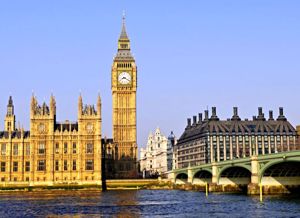 |
|
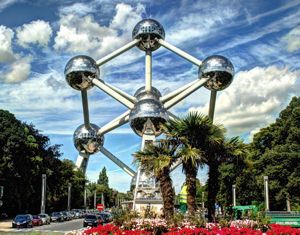 |
|
 |
|
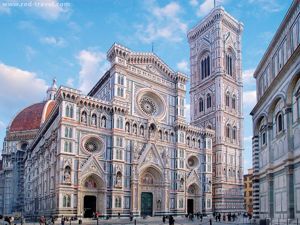 |
|
 |
|
 |
|
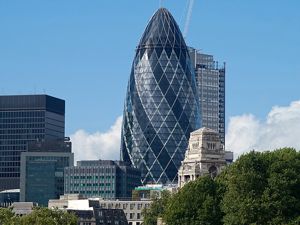 |
|
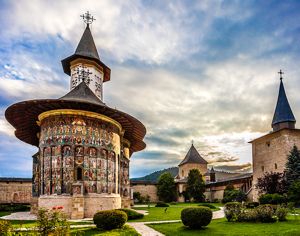 |
|
 |
|
 |